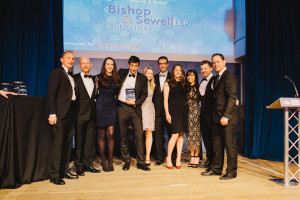The ALEP Spring Conference at the Royal Institution on 24th March 2015 saw a talk on the topic of ‘The Middleman’s Tale’ with Jennifer Ellis of Langley Taylor. We were discussing the position of intermediate landlords following the Howard De Walden v Stella Kateb and Accordway [2014] UKUT 0486 (LC) decision. A link to the full decision appears at:
http://www.landstribunal.gov.uk/judgmentfiles/j1084/LRA-150-2013.pdf
The position promises to get more interesting now that the intermediate landlord in this case has sought leave to appeal the decision of the Upper Tribunal to the Court of Appeal.
The intermediate landlord has limited rights under Section 7(1) of the Schedule 1993 Act to serve a notice of independent representation, but what does that mean?
Effectively, the intermediate landlord has the right to be independently represented in relation to any legal proceedings in which his title to any property comes into question (see Paragraph 7(1)(a)) – and also in any legal proceedings relating to the determination of any amount payable to him by virtue of Schedule 13 (Para 7(1)(b) of Schedule 11.
A link to Schedule 11 appears below:
http://www.legislation.gov.uk/ukpga/1993/28/schedule/11
The statutory machinery gives the competent landlord under Section 40 the power to bind the intermediate or ‘other’ landlord and provided that the competent landlord acts in ‘good faith’ and with ‘reasonable care and diligence’ he is not liable to the intermediate landlord by the exercise of any authority that is conferred on him by Section 40(2).
Effectively, the only remedy that the intermediate landlord appears to have (if he does not like what the competent landlord is doing – or has done) is to apply to court under paragraph 6 of Schedule 11 for directions as to how the competent landlord should act.
Is this sufficient? – this is clearly a point for discussion. However, what the Kateb case appears to show is that serving notice of independent representation does not give the intermediate landlord sufficient standing to call for an FTT hearing in his own right to determine the premium payable if the competent landlord and the tenant have agreed.
So, is this a stitch-up? – Provided that the competent landlord is acting with the duty of good faith and with reasonable care and diligence, he is not liable – (See para 6(4) of Schedule 11). So, if it can be said that the intermediate landlord is not behaving in such a way, or that the conduct of the competent landlord in concluding the lease negotiations is not in breach of this duty, then the competent landlord can ‘override’ the intermediate landlord.
Intermediate landlords will probably say that applying to court for directions as to how the competent landlord should act is disproportionately expensive to their interest(s) and also that by the time that they have made an application that the new lease may well be completed.
Tenants will probably take the view that the current arrangements are a ‘good thing’ as this prevents further tribunal costs being incurred if the intermediate landlord is the only missing piece of the settlement jigsaw.
Major estates, will likewise mostly take the view that they do not want to be embroiled in ‘satellite’ litigation about the premiums payable to intermediate landlords unnecessarily, and in particular that they probably do not want to incur irrecoverable tribunal costs in a situation which will otherwise be of no benefit to them and may simply decrease the consideration that they will receive.
However, there are some un-answered questions. What does the right to be independently represented in legal proceedings mean, in relation to the premium payable to the intermediate landlord in para 7(1)(b) if it does not mean “in relation to proceedings before the tribunal?”
Does it simply mean that the right to be independently represented in any such forum is always subject to the powers of the competent landlord under Section 40, and the right under para 6 of Schedule 11 to bind the other landlords. In other words, notwithstanding any right that he may have it is always subject to the rights of the competent landlord to bind him.
The only remedy therefore appears to be – as mentioned above – the right to apply to the court for directions as to how the competent landlord should act.
The intermediate landlord in the Accordway case, (Ms Kateb) has sought (and obtained) leave to appeal to the Court of Appeal and so it will be interesting to see how the Court of Appeal decides to deal with this issue when the case is heard in November of this year.
Mark Chick
Mark Chick is a solicitor dealing with leasehold issues. This note (being very general in its nature) is not a complete statement of the law in this area. It is therefore not a substitute for legal advice from a suitably qualified professional and should not be relied upon as such. No liability can therefore be accepted for any actions based on reliance upon it.
If you require legal advice please visit www.bishopandsewell.co.uk or email leasehold@bishopandsewell.co.uk
A short summary of the facts in Howard De Walden v Stella Kateb and Accordway [2014] UKUT 0486 (LC) appears below:
Very briefly – this was a claim for a lease extension in relation to a property at Flat 12 and Garage 4, 123/125 Harley Street, London, W1.
The tenant, Accordway Limited (as purchaser of the flat) served notice under Section 42 via the then incumbent tenant on 15th December 2012.
On 18th February 2013 the De Walden Estate as competent landlord served counter notice admitting the claim.
On 22nd February 2013 Kateb as intermediate landlord served notice of independent representation under para 7(1) of Schedule 11.
On 19th April 2013 the tenant applied to the FTT.
By 18th July 2013 both the De Walden Estate and Accordway Limited wrote to the FTT confirming that terms had been agreed. The tribunal then vacated its file.
On 25th July 2013 the intermediate landlord wrote to the tribunal indicating that matters were ‘not agreed’ and asking the tribunal to re-open its file.
On 15th August 2013 the new lease completed.
On 17th September the FTT had a jurisdictional hearing to determine whether it had the ability to determine the sum payable to the intermediate landlord (Ms Kateb) in this case. At first instance the FTT determined that it did have jurisdiction to determine the amount payable to the intermediate landlord, notwithstanding the agreement between the competent landlord and the tenant.
It was against this decision that Howard De Walden Estate sought leave to appeal from the Upper Tribunal. The Upper Tribunal decision (reported above) determined that the FTT had no jurisdiction to decide the amount payable to the intermediate landlord because the tenant and the competent landlord had reached agreement.
The decision of the Upper Tribunal has now been appealed to the Court of Appeal.

